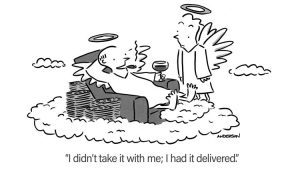
Ultimate Guide: How to Designate a Beneficiary for Your 401(k) Account
Learn how to designate a beneficiary for your 401(k) account to ensure your retirement savings are seamlessly passed on to your loved ones as per your wishes.
Home » Estate & Gift Planning Fundamentals » Beneficiary Designations
CATEGORY

Learn how to designate a beneficiary for your 401(k) account to ensure your retirement savings are seamlessly passed on to your loved ones as per your wishes.

Bequests and Beneficiary Designations make up over 92.5% of all planned gifts. And it’s a very simple gift for your supporters to make since it does not affect their cashflow or lifestyle during their lifetime.

This is a unique time for nonprofit organizations. Generational wealth transfer is in full swing. Is your organization prepared to make changes to accommodate the sudden influx of millennial wealth? If you’re prepared, this could be a momentous time for your nonprofit.

Don’t let legislation paralyze your planned giving marketing efforts.

Most “experts” place the practice as having been birthed in the 1970s — or maybe as far back as the ’40s. So it’s safe to say the first planned gift must have been made sometime in those decades. Right?

Long-term study shows multiple benefits for charities to get in the estate plan sooner. We all know charitable estate giving is a big deal. In comparison, despite all of the media attention and conversation generated by corporate giving, annual estate giving has always been much larger. (In some years, charitable estate gifts are more than double all corporate gifts.) Of course, we all know that to receive any estate dollars, your organization must get in the will or other estate

Question My nonprofit organization currently uses all bequest proceeds for operating expenses. The family of a recently deceased donor has questioned this and wants us to designate the funds for endowment (what is an endowment). What should we do? Answer It’s important to remember that only funds explicitly restricted by the donor can serve as a true endowment (importance by Deb Ashton). If a donor’s will does not specify a restriction, these funds are technically unrestricted and can be used